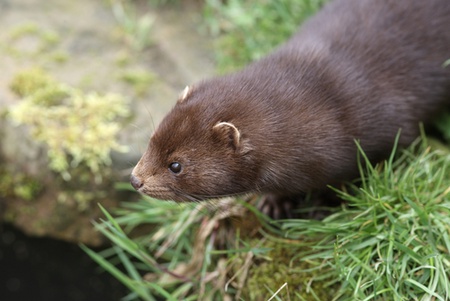A study aiming to discover why American Mink, an invasive species, choose to settle in areas where they do and therefore discover ways to more effectively prevent their spread, was published today in the Journal of Applied Ecology.
Invasive species present a daunting challenge to conservationists because of the scale in which their impact plays on biodiversity. Despite current emphasis on prevention and early action, many of these species have become well established and their spread is overwhelming native species.
Scientists have now found that the way individuals attempt to recolonise areas that have been previously cleared of this unwelcome species can be predicted, helping to focus control effort to the areas most at risk.
The research, led by scientists at the University of Aberdeen, has taken place of the last decade. Scientists worked alongside conservation practitioners and many members of the public acting as volunteer citizen conservationists who sought to push back the invasion of Scotland by the American mink.
Professor Xavier Lambin, who led the research, said: “Mink originally escaped from fur farms all over rural Scotland since 1962 and are devastating to bird and mammal species living along waterways, including the water vole, a species with high cultural value in the UK. This is of huge concern to conservationists."
Dr Yolanda Melero, an EU-funded fellow and lead author said “We used DNA forensics to reconstruct the pedigree and place of birth of mink culled by conservation volunteers, and estimated the proportion of young mink who settled away from home. We found that there is ample potential for mink dispersal to compensate for the control effort. Seventy seven percent of mink had dispersed from their natal area, and 20 % of these travelled more than 80 km. Thus, few places, if any, are beyond reach of such an effective invader.
“Next, we asked whether all parts of the management area were equally at risk of reinvasion or whether some parts were more attractive and more likely for mink to re-settle in and therefore should receive heightened vigilance. It is possible to predict where re-invading mink would settle down by considering all options open to immigrants.
“We found that distance from the natal area was a poor predictor of settlement choice and that both male and female mink were discerning in their settling decisions and preferred high-quality river sections. Two metrics of quality, one based on habitat features, the other derived from the settlement decision of other mink gave broadly consistent predictions.
Prof Lambin added “We were encouraged to find data obtained during management interventions largely carried out by ‘citizen scientists’ provided us with the information we needed to predict patterns of recolonization.
“These results are important because they provide evidence for targeting control to patches attractive to immigrant mink and creating “ecological traps” where long term control efforts might be concentrated."
Callum Sinclair, the project manager for Scottish Natural Heritage, which funded part of the research, said: “As we begin the challenge of delivering the Scottish Invasive Species Initiative with our partners, we welcome research findings that help us carry out practical management on the ground. Invasive species are hugely challenging to control on a large scale and to do so effectively, we must act on the basis of sound evidence and best practice.
“As we look to build on the progress made so far in preventing the spread and dispersal of American mink, it is essential that we use our resources in the right places and at the right times. This research gives us that sound scientific base to work from and helped us to plan our approach to mink control. Working with partners and our essential volunteer network, we can make a real difference to the environment and ecology of northern Scotland.”


